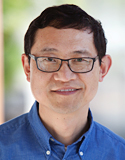非常抱歉,
你要访问的页面不存在,
非常抱歉,
你要访问的页面不存在,
非常抱歉,
你要访问的页面不存在,
验证码:

职称: Chair
所属学校:Yeshiva University
所属院系:Albert Einstein College of Medicine
所属专业:Molecular Biology
联系方式:718.430.3320
A common feature shared by cancer, obesity, and tissue regeneration is deregulation of cellular homeostasis, including cell proliferation, cell growth, cell metabolism, and cell death. Tumor suppressors such as pRb and p53, oncoproteins such as Ras and Myc, and organ size regulators such as YAP, are the major regulators of these aspects of cellular homeostasis. We are studying how these regulators regulate these aspects. In the cancer field, we are identifying treatment strategies for tumors that have permanently lost the tumor suppressor pRb or both pRb and p53 using mouse tumor models. pRb and p53 are the two major tumor suppressors. Their functions are activated by oncogenic events and they implement most and best cells’ antitumor mechanisms to safeguard against tumorigenesis. When tumorigenesis succeeds, pRb, p53, or both is frequently inactivated. In reverse, reactivation of pRb and p53 are rationale for most antitumor therapeutics. However, when pRb and p53 are genetically inactivated, cells irreparably lose the antitumor mechanisms afforded by them, which may explain why advanced cancers are difficult to treat. We generated mouse tumor models in which the genes for pRb or both pRb and p53 are knocked out to identify mechanisms that can still inhibit these tumors. We showed that combining deletion of Skp2, which is a target of repression by pRb, completely blocked tumorigenesis in the absence of pRb or both pRb and p53 (refs 2, 5, 7, 8). Ongoing studies aim to target functions of Skp2 in regulating p27 degradation, regulating cancer cell metabolism, and regulating epithelial-to-mesenchymal transition to inhibit pRb and p53 doubly deficient tumors.